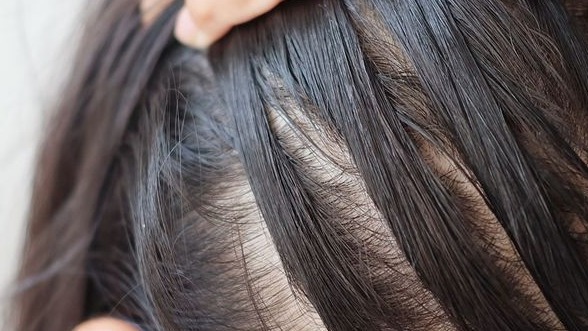Healthy hair starts with a healthy scalp. Learn how inflammation, buildup, and common scalp conditions in Singapore can quietly trigger hair thinning—and what you can do to fix it.

When most people think about hair loss, they focus on the strands themselves. But the real story often begins beneath the surface. Your scalp is where hair follicles live, grow, and regenerate—and when the scalp is imbalanced, inflamed, or clogged, healthy hair growth becomes compromised long before strands begin to fall.
In our humid Singaporean climate, scalp-related hair loss is especially common but often overlooked. From invisible inflammation to excessive oil production and poor circulation, scalp health is one of the most underdiagnosed factors in progressive thinning.
Think of the scalp as the soil from which hair grows. When the environment is unbalanced, follicles can’t anchor or grow properly. Common signs of scalp dysfunction include:
Over time, poor scalp health leads to chronic inflammation around the follicle—a condition known as perifollicular inflammation. This damages follicular stem cells, weakens hair anchorage, and disrupts the production of healthy hair.
The combination of heat, sweat, and sebum in Singapore’s weather creates a breeding ground for seborrheic dermatitis, a common scalp condition marked by greasy flakes and inflammation. It’s more than dandruff: this chronic condition disrupts the microbiome and weakens the follicles over time.
Many patients unknowingly accumulate layers of hair waxes, silicones, and sweat on their scalp from dry shampoos, styling creams, or even environmental pollutants. This buildup clogs pores, suffocates follicles, and fosters yeast overgrowth, which exacerbates inflammation.
A healthy scalp hosts a diverse microbiome. However, over-cleansing or harsh products can strip this balance, allowing harmful bacteria or fungi to thrive. When this happens, the immune system reacts—resulting in shedding, itching, and eventual miniaturisation of follicles.
Tight scalps, common among people under chronic stress or poor posture, reduce blood flow to the follicles. Hair needs oxygen and nutrients delivered via the bloodstream, and anything that constricts this supply will weaken the follicle’s growth cycle.
Scalp diagnosis is the first step. Through a trichoscopy, we can assess oil levels, follicular density, inflammation markers, and buildup. From there, treatment is customised—often combining medical-grade exfoliation, anti-inflammatory infusions, or probiotic scalp serums to reset the microbiome and reduce stress on follicles.
In some cases, LED light therapy would be recommended to stimulate blood flow, or topical anti-fungal treatments to address seborrheic inflammation. Home care is also key, such as by choosing the right shampoo, spacing out washes, and using detoxifying scalp masks weekly, which can significantly improve the scalp’s resilience.
Many people spend years applying serums to their hair strands without ever addressing the foundation. But unless your scalp is healthy, no hair product can reverse the underlying damage. Think of it this way: you can’t grow strong plants in poor soil.
Book a consultation with Ido Hair & Aesthetics. We don’t guess, we diagnose. With real-time imaging and targeted treatments, we help you restore scalp health from the inside out and pave the way for thicker, stronger hair that lasts.